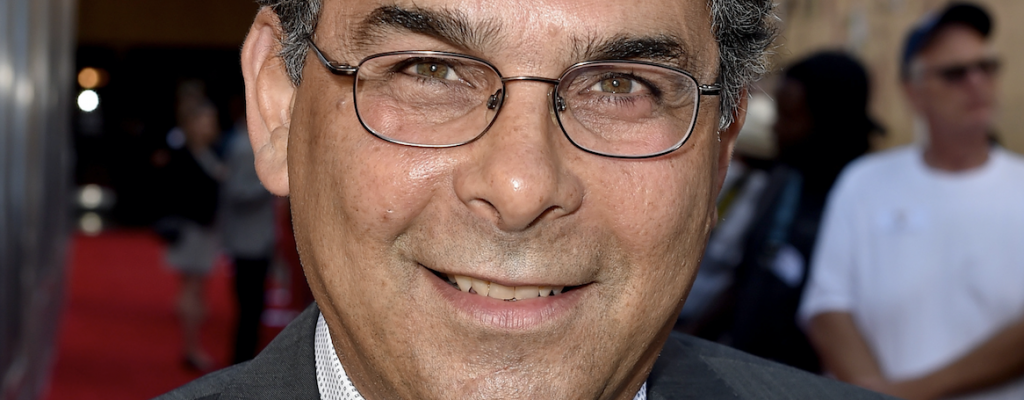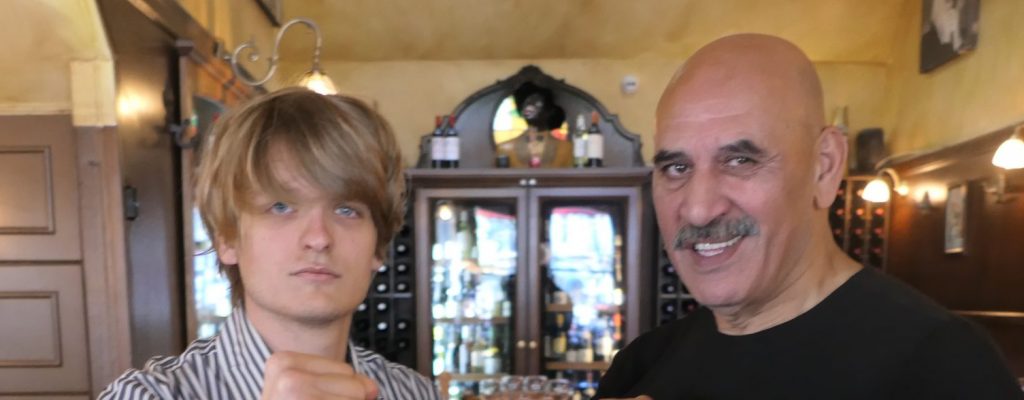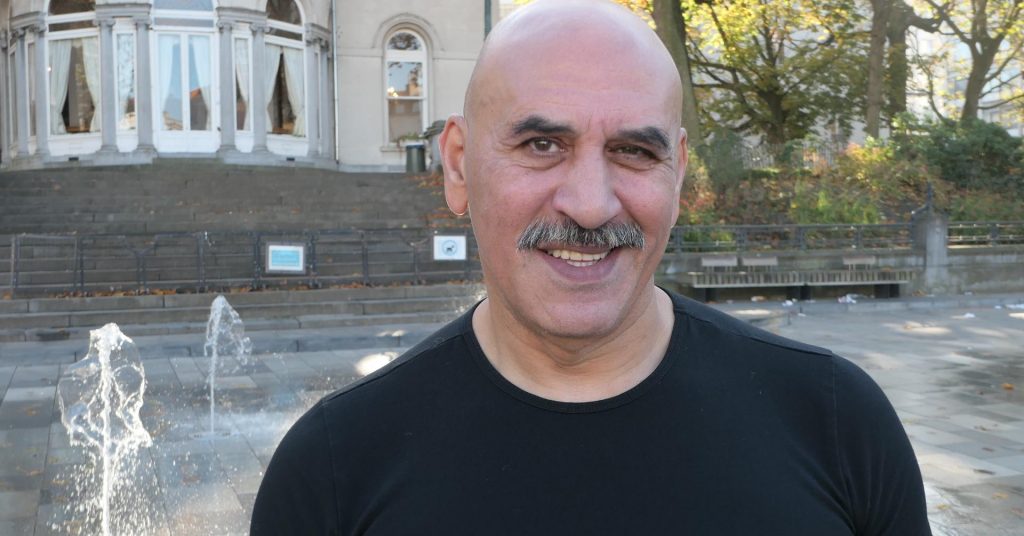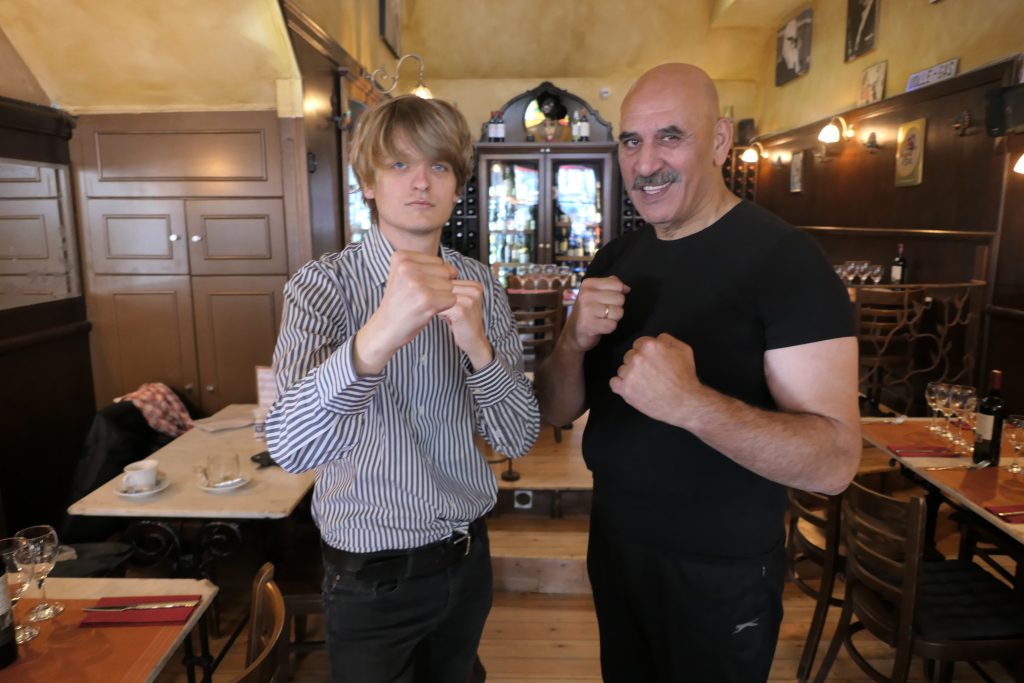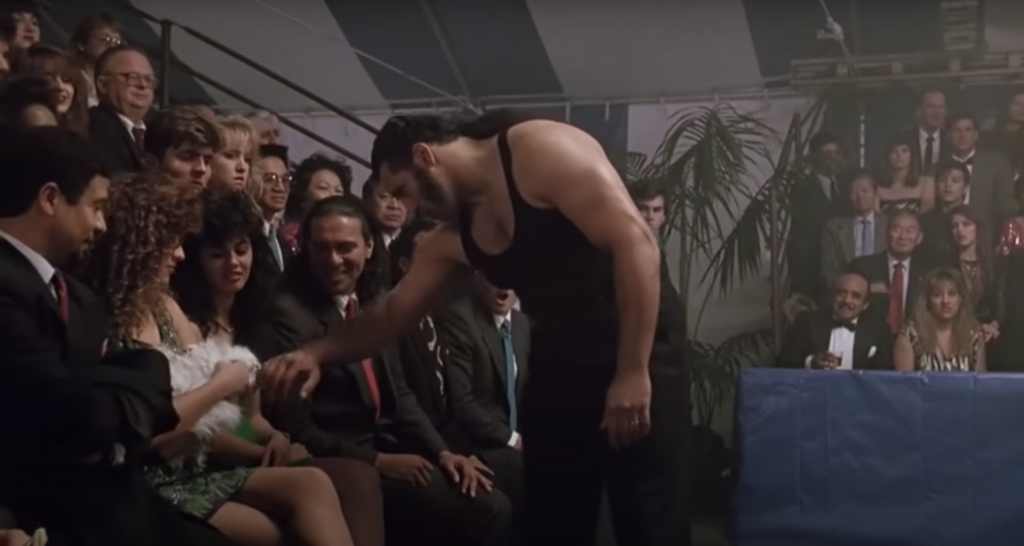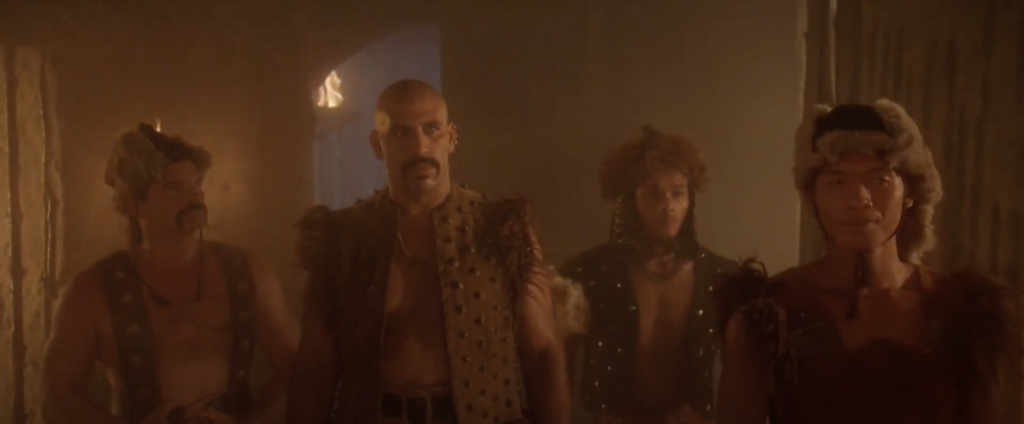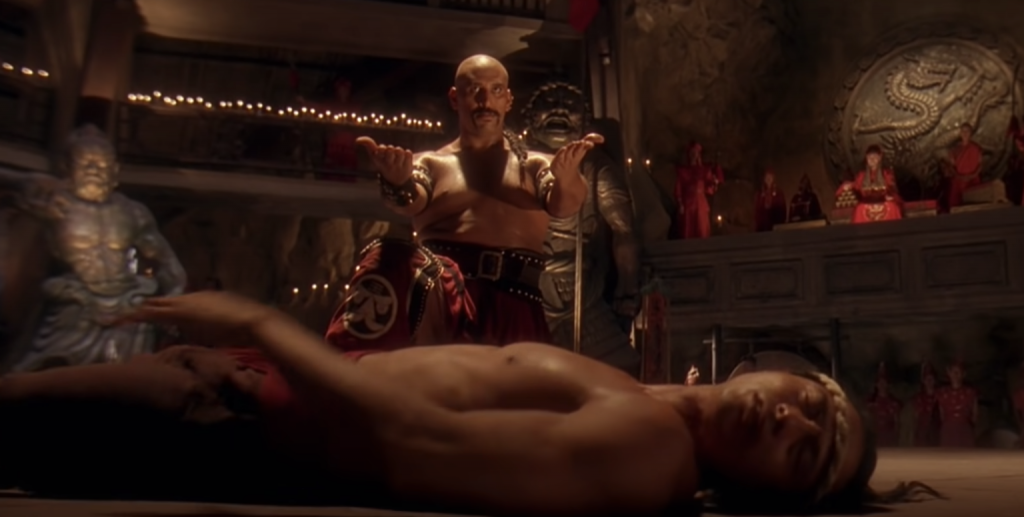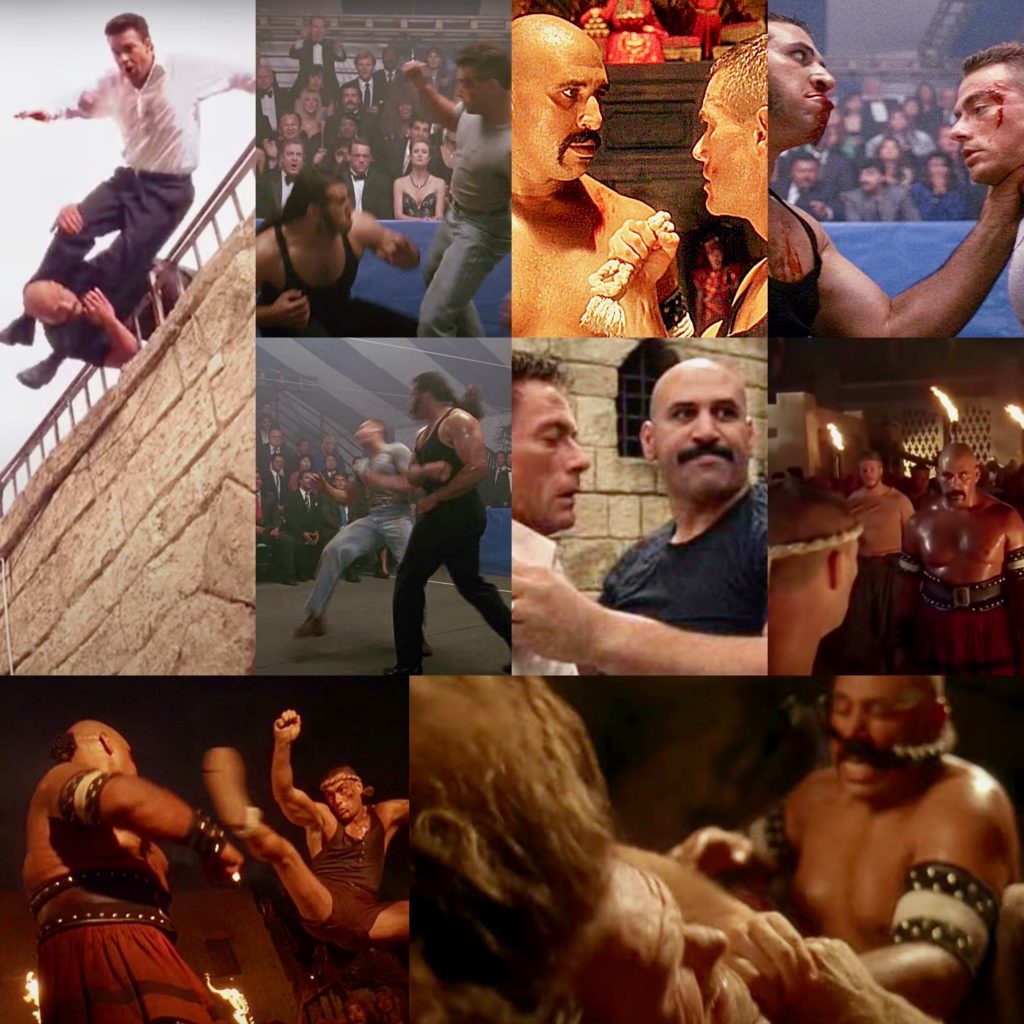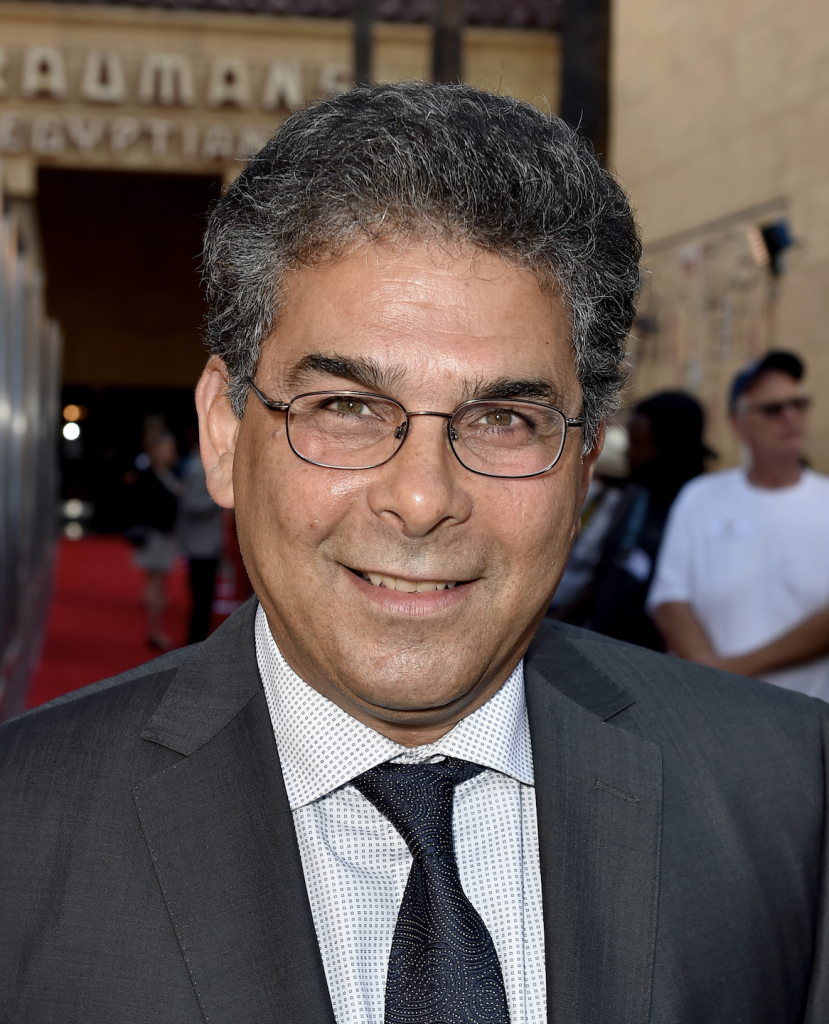
Sheldon Lettich is an American screenwriter, film director, and producer. He is notably known for his work in the action film genre—and his collaborations with Jean-Claude Van Damme, Sylvester Stallone, Mark Dacascos, Dolph Lundgren, and Daniel Bernhardt. Besides co-writing Bloodsport and Rambo III, Sheldon Lettich directed and co-wrote Lionheart, Double Impact, and Only the Strong.
Grégoire Canlorbe: What is the situation with regard to your long-established movie-project about Vietnam?
Sheldon Lettich: Well, I’ve written a lot of scripts about Vietnam, but none of them has been made. I wrote a script called Firebase. And it was kind of like that movie called Zulu. It was kind of like that. Basically, a small group of Americans on a hilltop firebase, and they got attacked by a huge number of North Vietnamese and Viet Cong. That was the screenplay I wrote a number of years ago. And Sylvester Stallone read the screenplay, and he liked it. And that’s how I ended up working with him on Rambo III, because he had read that screenplay. I’ve written a few other Vietnam screenplays, but none of them has gotten made, yet.
Grégoire Canlorbe: You collaborated with Sylvester Stallone on Rambo III. How did your team come up with the idea of the tank-versus-helicopter scene? Or the idea of colonel Trautman’s “In your ass!” line?
Sheldon Lettich: The tank-versus-helicopter scene wasn’t my idea, that was Stallone’s idea. And I thought it was not a plausible idea, but it seemed to work. You liked it, right? A helicopter versus a tank just makes no kind of sense at all because a tank is not designed to shoot at something moving fast like an airplane. A tank versus an airplane or a helicopter makes no kind of sense at all. You’d have to be very lucky. It takes some time to aim that cannon on a tank. So for a tank versus a helicopter, I didn’t believe it, but it seemed to work. There we are, it was Sly’s idea. As for colonel Trautman’s line in the interrogation scene, that was Stallone’s idea as well. That wasn’t mine.
Grégoire Canlorbe: What kind of movie could be done about the withdrawal of the US troops from Afghanistan? Perhaps a new Rambo installment, in which Stallone would rescue a group of hostages once again abandoned in Afghanistan and, in the process, decapitate his former Taliban allies turned into despots of the region?
Sheldon Lettich: I don’t see a good action movie coming out of that because everything about that was very disappointing. That really shouldn’t have happened the way that it happened. I don’t think anybody would want to see a movie about that. And Stallone is in his 70s, now. He’s a little old to go back into Afghanistan. And I think he’s had his—I think Rambo has had—his Afghanistan adventure and doesn’t really need another one. So I don’t see that happening at all. I’m 70 years old. Stallone’s even older than me. I don’t know, he’s like 72. I don’t think he’ll want to do some crazy action movie where he’s running around firing a gun and killing all kinds of Afghans. It’s just not going to happen again.
Grégoire Canlorbe: Jean-Claude Van Damme served as an editor on Bloodsport, which you co-wrote. How much did he change the story with respect to the original screenplay?
Sheldon Lettich: The first cut was very bad, so Jean-Claude got involved. And he basically recut the fight scenes because he was involved with those fight scenes. He knew how the fight scenes should work. And there was another editor that Cannon brought in to recut the movie and to restructure it. And so they fixed it up. But Jean-Claude basically worked on the fight scenes, and he made those work really good. In the meanwhile, they got some other writers involved who made some changes. Most of the changes, I thought, were very good, actually. What I mostly did with Bloodsport is I came up with the idea. I structured it. I came up with the three-act structure where the beginning is that everybody’s getting ready to go to the fight. The middle is the tournament, and the movie ends after Gong Li is defeated and Jean-Claude goes home. So, that’s the structure that I came up with.
Grégoire Canlorbe: Before Bloodsport, had you been involved with Karate Tiger?
Sheldon Lettich: No, I had nothing to do with that. That’s the first movie that I saw Jean-Claude in, here in the US. It was called No Retreat, No Surrender. And that was the movie—when we were looking for an actor for Bloodsport, that movie came out in theaters. It was playing in theaters here, in Los Angeles so the producer, Mark DiSalle, told us, “We found this new actor, Jean-Claude Van Damme. Go see his movies in the theaters, right now.” And that was No Retreat, No Surrender. And we were very impressed with him. And that’s pretty much—that helped him solidify the role in Bloodsport.
Grégoire Canlorbe: After Bloodsport, did you get involved in Kickboxer?
Sheldon Lettich: Well, I was involved just in that Kickboxer was the project that Mark DiSalle approached me with. When I first met Mark, he was looking for a writer, and he had an idea for a martial arts movie called Kickboxer. And so, he pitched me the idea, and I thought I had a better idea, which was Bloodsport. Bloodsport had not been written, but I’d been talking with Frank Dux about his experiences. Turned out that they weren’t real experiences: he had made all that stuff up.
Grégoire Canlorbe: Please tell us about your partnership with Jean-Claude Van Damme in writing Full Contact, which is known as Lionheart in the US if I’m not mistaken.
Sheldon Lettich: Yes, Lionheart. Actually, I got together with Jean-Claude and he came up with the basic idea. That was his idea. It was called the Wrong Bet, at first. We sat down in a coffee shop, one night on Sunset Boulevard to talk about it. We were in that coffee shop for about three hours, and the manager wanted us to leave because we were taking up—it was kind of empty, but he still wanted us out of there. He thought we were there for too long. And we told him to leave us alone. “We’re working on something, right now.” And then, he called the cops. So actually, we had some sheriff’s deputies come in there and tell us to leave. But in those three hours, we came up with the basic story line for Lionheart. But it was Jean-Claude’s original idea, that whole thing about—I think I came up with the Foreign Legion idea, but he came up with that idea about his sister-in-law, and she’s got a little daughter, and he has to fight in order to make money to take care of them. That was Jean-Claude’s.
Grégoire Canlorbe: The fight between JCVD and Bolo Yeung at the end of Double Impact is quite an epic moment. How was it shot?
Sheldon Lettich: Actually, it was shot in two different locations because we shot part of it in Hong Kong. I’m just trying to think about. We were on a ship in Hong Kong. No, the exterior of the ship was in Hong Kong, the interior of the ship was in Los Angeles. That was in San Pedro. And so, we actually shot on this ship, and then we looked at the footage later. We were kind of rushed that day. We didn’t have enough time to really do it right. And so we had a set built in Santa Clarita, also in Los Angeles, to shoot some additional shots. So it was basically like—it looks like it’s all done at the same time, but it was actually done in two different locations at two different times. We cut it all together, and it looked really great.
Grégoire Canlorbe: Why did JCVD never act with Bolo Yeung again after Bloodsport and Double Impact? After all, three is a magic number as they say.
Sheldon Lettich: Well, he made two movies with Bolo. Bloodsport has Bolo, and Double Impact has Bolo. It’s hard to just keep using the same villain over and over again.
Grégoire Canlorbe: Are you concerned for the future of the cinema of Hong Kong as the Chinese Communist Party will be extending its grip on the city?
Sheldon Lettich: I’m not an expert on that, but obviously, we’re not going to see Hong Kong movies like the old ones. It’s all going to change now because the Chinese have taken over. So there are certain things you can say, certain things you can’t say. The Chinese government controls whatever is going on in Hong Kong. So you’ll never see those Hong Kong movies like we saw before, the Jackie Chan’s. Oh, Jackie Chan, of course, is doing movies in China, also. But they’re not going to be quite the same as those John Woo movies. I don’t think he’ll be able to make movies anymore in Hong Kong with corrupt police officers. Basically, the way that the Chinese government sees it, there are no corrupt police officers in China. There are no gangsters in China. So, basically, everything has to change. They’re up to do a lot of historical stuff. So, you’re probably not going to see any contemporary stories like in those Hong Kong movies where you’ve got good cops, bad cops, gangsters, all kinds of stuff like that. I think that’s going away. And all they’re going to see out of Hong Kong and China is stuff that takes place hundreds of years ago in earlier eras in China, but not contemporary. Because contemporary means that you’ve got to have good guys and bad guys. And in China, they want everybody to believe that China is a perfect country. There are no gangsters, there are no corrupt cops. So everything is wonderful in China, which means you can’t have much drama for a contemporary movie. So, that era—the era of the John Woo movies and Ringo Lam and all of that—that’s pretty much over, for now.
Grégoire Canlorbe: Please tell us about The Hard Corps, starring Jean-Claude Van Damme and Vivica A. Fox. How did such great movie with such great cast end up as a DTV?
Sheldon Lettich: Well, we were hoping it was going to go to theaters. And the problem was that the producers just didn’t want to spend the money to get other actors that we needed to make it a theatrical movie. Because originally, it was supposed to be Jean-Claude and Wesley Snipes. So the boxer was supposed to be played either by Wesley Snipes or Cuba Gooding, which would have made it a much bigger movie. Basically, they said, “We’ve got Jean-Claude Van Damme. We’re paying him a lot. If we get Wesley Snipes, we’ll have to pay Wesley Snipes the same amount of money we’re paying Jean-Claude, and that’s going to make the budget too big.” Now, in my opinion, it would have helped the movie. We would have had a bigger name in there. We would have had three big names. We would have had Jean-Claude, Wesley Snipes and Vivica A. Fox. And I think for sure, it would have been a theatrical movie. And that’s why it didn’t go theatrical because we just didn’t have the money we needed to get the right cast.
Grégoire Canlorbe: I’d like to hear you about The Order, which easily ranks among your best collaborations with JCVD. The scene in which Van Damme is dressed as a Hassidic Jew is just exceptional.
Sheldon Lettich: I made another movie in Israel—I did a movie there with Dolph Lundgren, The Last Patrol. So I got to know Israel pretty well. The cops trying to catch Van Damme, it was basically my idea. But I didn’t write the original script for The Order. It was written by this guy, Les Weldon. I wanted to make it more like an old Hitchcock movie. Hitchcock made a movie called North By Northwest and another one called The Man Who Knew Too Much. And that’s what I wanted to do with The Order.You’ve got the bad guys and the cops all after Jean-Claude. So, basically, he’s in trouble with everybody. And that’s how all those Hitchcock movies worked. I rewatched North By Northwest just recently. It was on TV. And I realized there were a lot of ideas that I took from North By Northwest. And I even forgot that I took the ideas, like this one scene in North By Northwest with Cary Grant. He’s trying to disguise himself, so he puts on some dark sunglasses. I did the exact same thing in The Order. We got the cops looking for Jean-Claude, and he’s putting dark sunglasses on to disguise himself. So that’s the kind of movie it was supposed to be. And Hitchcock put a lot of humor into those movies, too, and I put a lot of humor into The Order.
There was a Jean-Paul Belmondo movie called The Man from Rio. It was in the 1960s. I saw it in the theater. And so I wanted to make it a little bit like that. The same thing where everybody is chasing our hero. The cops and the bad guys were all after him. And then, there was another movie I saw. It was a French movie. So those two French movies, right there. It was called The Mad Adventures of Rabbi Jacob, where some guy was anti-Semitic. He’s got the mafia after him, and he disguises himself as a Hasidic Jew. And then, the bad guys and the cops are all chasing him. So that’s another part of that idea that I had. And then, just being in Jerusalem and just seeing these guys walking around, I just thought that would be a good disguise for Jean-Claude to have if he was trying to get away from the cops. So that was what pretty much led to that. And I really wasn’t sure if Jean-Claude would go for it, if he would actually do that. And he did. He totally went for it. He put the beard on and everything, and that’s my favorite sequence in the entire movie. I really love the way that whole sequence turned out. So that’s my favorite part of The Order.
Our producer was Avi Lerner. And one thing Avi told me before we did the movie, he said, “l want an action scene every 10 minutes. Lots of action.” And he paid for it, too. They had the budget. We did a lot of crazy stuff in The Order. We were at the airport. Can you imagine shooting—nobody else has done that in Israel, but Avi had some connections. He had a cousin who was a pilot for El Al. That was how he got that jet where Jean-Claude was trying to get around the jet and just coming through. That was Avi’s cousin in the cockpit. And then, Avi was a good friend of the Mayor of Israel at the time, Ehud Olmert. And that’s how we got permission to shoot in Jerusalem. I mean, can you imagine? We’re doing this crazy chase scene, and we’re really on the streets of Jerusalem for most of it.
It was very hard to shoot there. It’s very crowded. And the people who live there, it’s divided between Jews and Muslims. And they disagree on just about everything, but they all love Jean-Claude Van Damme. All of them are Van Damme fans. So we had a hard time getting away from them because they’d be surrounding us and chasing after us. They were like, “Van Damme! Van Damme!” They wanted him to sign autographs. It became very difficult to shoot in Jerusalem, so we ended up building sets in Bulgaria to look like Jerusalem. Half of that chase scene was shot in Jerusalem and on the real streets, and then the other half we shot on a recreated version of Jerusalem in Bulgaria. And what I find interesting about this is that even people who are from Israel or who’ve been in Jerusalem many times don’t realize that we shot in two different places. They think that we shot the entire thing on the streets of Jerusalem. So we did a pretty good job recreating that Jerusalem look.
Grégoire Canlorbe: Before Mark Dacascos acted for Christophe Gans in Crying Freeman and Brotherhood of the Wolf, he was revealed in Only the Strong. Please tell us about your collaboration with Dacascos.
Sheldon Lettich: Well, he had a manager named Katherine James, and she was the one that was pushing Mark. She got in touch with me, said, “You need to work with my client, Mark Dacascos. He’s going to be the next big action star.” And so I met Mark and I liked him very much. And one thing I found out about him was that he was very good with gymnastics. He was a good acrobat, and I think he’d already been studying some capoeira at the time. And that was an important part of the movie. It was all about capoeira. So Mark was willing to go to classes with this real capoeira master from Brazil. So he learned all that stuff and was very willing to do anything I asked him to do. And it ended up working out great for the movie because he was able to do so much stuff that Van Damme can’t do, for example. Like Mark was good with the gymnastics. He could do flips. He could jump in the air. Jean-Claude can’t really do that kind of stuff. He’s good with the kicks and the punching, but if he has to do something gymnastic, we generally have to get a stunt double to do it for him. And also, Jean-Claude was not good with weapons, like martial arts weapons. He can use a gun. Of course, anybody can fire a gun, but he couldn’t do like the sticks and poles and all that kind of stuff, and Mark could do all of that stuff. We realized that in the movie, we’ve got him having fights with people using sticks and everything. And with Jean-Claude we couldn’t do that.
Grégoire Canlorbe: Scott Adkins is sometimes thought to be Jean-Claude Van Damme’s spiritual heir. How do you assess his performances?
Sheldon Lettich: I think he’s great. I met him a few years ago, and I knew he was going to do great as an action actor. And he’s been doing terrific. He’s been doing a lot of great action movies. Unfortunately, we’re in a different era, now. Had I met Scott in the 1980s, he probably would have become a much bigger star because those kinds of movies were popular back then, in the 80s and 90s. By the time Scott came on the scene, those kinds of movies were not happening, anymore. And now, it’s become superhero movies. So superhero movies have kind of taken over as far as action movies. And Scott has certainly done a number of action films, and he’s been great in them, but that’s just not the kind of movie that’s getting the big theatrical releases, nowadays, which is unfortunate.
Grégoire Canlorbe: Do you share Martin Scorsese’s, Ridley Scott’s, and Denis Villeneuve’s recently expressed reservations about Marvel movies?
Sheldon Lettich: Well, personally, I’m a Marvel Comics fan. From a long time ago, I was reading all those comic books in the 60s when they came out. I would go down to the to the store. The day that they put the comic books on the stands, I would go down to the store and get them. So I had all the originals. I had the first Fantastic Four and the first X-Men, the first Spider-Man. I had all those. I was a big fan of Marvel comic books back then. And then, when they started making the Marvel movies, I thought the first few were really great. I loved the first Iron Man movie, for example. And the first Captain America movie, I thought that was terrific. But then, they just started getting just too big for my taste. They’re too big, too many characters. And I started losing interest in those Marvel movies. They’re well-made, but there’s a sameness to them. They have the same kind of structure. They all end up with these huge action scenes with lots of special effects, lots of CGI. And personally, CGI is great, but I prefer action films that have some real stuff going on screen where people are actually fighting. They’re not relying on CGI.
I was a big fan of the earlier James Bond movies, the pre-CGI James Bond movie. I was a big James Bond fan for many years. But with some of these more recent ones, once they started getting into too much CGI, and I wasn’t seeing real stunts anymore, I started losing interest in those. Although the Daniel Craig ones, I think are really good. They basically made some real changes with those Daniel Craig versions. But even so, I’m just not the Bond’s fan that I used to be many years ago. And the Marvel movies, Scorsese says they’re not real movies. Well, they really are more like just an assembly line product. There’s a sameness to all of them, now. It just feels like you’re watching the same movie: lots of CGI, lots of explosions and crazy weapons, crazy flying machines. But they just don’t have the same kind of heart that they had in the earlier ones, the first few that they made.
Grégoire Canlorbe: Do you share the commonly heard criticism that Christopher Nolan’s action scenes are as much bad and poorly shot as his screenplays and concepts are astute?
Sheldon Lettich: Christopher, I think he’s great. See, his action scenes feel fresh and original to me because he’s basically running the show. He’s coming up with these movies. He’s not recycling some comic book characters. He’s doing original movies, coming up with original action scenes. Whereas with the Marvel movies, the producers are pretty much telling—they’re hiring directors who are basically traffic cops and telling them, “This is what the movie is going to be. This is what the action scenes are going to be. And you get out there, and you just tell the actors what to do.” They just move the characters around. And with Christopher Nolan, it’s not like that. He’s basically making Christopher Nolan movies. He’s doing action scenes that are fresh and original and doing them the way he wants to do them. And I really admire him for that. And James Cameron, too. James Cameron is another example. I love the Avatar movie. I’ve watched it a number of times. The action scenes are great. Everything about Avatar is fantastic. But James Cameron, basically, he’s calling his own shots. He’s basically saying, “I want to do this movie called Avatar. These are the actors I want.” And he goes and makes the movie. And he’s got no studio executives telling him how to structure his movie, what characters are going to be in it. It’s basically his show. And that makes a big difference.
Grégoire Canlorbe: How do you explain that Hollywood, which used to be somewhat conservative and patriotic in the Reaganian era, has become so woke in the last few years?
Sheldon Lettich: No, it wasn’t really conservative in the eighties. It was not Hollywood. That was Stallone. That was Stallone’s own point of view. Stallone was somewhat patriotic. He was a big supporter of Reagan, America. Reagan was, I don’t know—I wouldn’t call him a close personal friend, but he knew Reagan. He voted for him. I’m not sure if he campaigned for him, but they were very closely aligned in their politics. The rest of Hollywood was not. Stallone was kind of an outlier when it came to Hollywood. Oliver Stone, for example, has a completely different point of view. So that was Stallone and Schwarzenegger. Both of them were Republicans. Schwarzenegger even ended up being the Republican governor of California. So that was really their point of view, but that was not Hollywood. Hollywood was actually much more liberal during that period.
And that’s why the Rambo movies got such bad reviews, too. Like Rambo III, I mean, we got a Golden Razzie Award for Worst Screenplay, Worst Movie because most of the press was very liberal. And so they were not really voting their conscience about the movie. It was all about politics. “Because Stallone is a conservative Republican, we’re going to say that his movie is shit.” But actually, Rambo III, I think, is a pretty damn good movie. I like Rambo II even better. But basically, that was not the Hollywood attitude at the time. That was Stallone, Schwarzenegger—Bruce Willis also ended up being a Republican. So a lot of these action stars had a different point of view from most people in Hollywood. Like even Van Damme, he’s very conservative. He’s not an American. I think he is an American citizen now, actually. And he was a Trump supporter. Even Stallone and Schwarzenegger were not Trump supporters but Van Damme was. We’re not talking about Hollywood in general, we’re talking about action stars who, for the most part, tended to be more conservative and lean towards the Republicans more than the Democrats.
Grégoire Canlorbe: Please tell us about this recent movie of yours whose main character is a soldier dog, Max.
Sheldon Lettich: Well, that brought me back to Afghanistan because the beginning of the movie takes place in Afghanistan? So rather than Rambo in Afghanistan, Max was really Rambo with four legs instead of two. He was basically a Rambo character. Max, he’s a soldier in Afghanistan. He gets sent back to the States. And then, when some bad guys are threatening his family, well, then he uses all his skills to defeat the bad guys. So it was really Rambo with four legs and a tail. That was basically Max. And I got the idea for that because I got some puppies a number of years ago at the pound, and supposedly, they were German Shepherds. They were little, so it was hard to tell. So I got these two puppies, and months later, I discovered that they were not German shepherds, they were Belgian malinois. And so I did some research on Belgian malinois, and I found out that the army and the police are using these dogs because they’re the best dogs for that kind of work. So I was doing my research, and I saw that there were a couple of dog handlers that died in Afghanistan or Iraq. And then, their families asked, “Well, my son is dead, but can I have his dog? Can his dog be part of our family because that’s all we have left of him from his time in the military?” And so these families ended up adopting the dogs, and that was the basis for Max. Basically, this dog handler gets killed, his dog survives. And then, the family back in Texas wants to adopt the dog. And the dog ends up being their protector, coming to the rescue.
Grégoire Canlorbe: Thank you for the opportunity to do this interview.
Sheldon Lettich: You’re welcome. That’s funny, I was just exchanging text messages with Brian Thompson. And Brian is in The Order. And Brian is a real expert with swords. He was in the Conan Show at Universal Studios. So he used to work with swords all the time. He’s really good with them. And then, our stunt double for Jean-Claude in The Order was David Leitch. Well, David is also really good with weapons, so Brian and he worked out a great sword fight sequence. And David, by the way, has now gone on to be a director. He directed Deadpool 2. He did that one, I forgot the title of it, the one with Dwayne Johnson. He did this really huge movie with Dwayne Johnson [Fast & Furious Presents: Hobbs & Shaw]. And he was our double for Jean-Claude.
So, we were supposed to have a sword fight at the end of The Order.But Jean-Claude, like I said, he’s not good with weapons. We tried doing a few things with him. He wasn’t comfortable with it. He’s comfortable with what he’s good at, with the kicks and the punches and all of that. So he said, “Guys, let’s not do this. I can’t do this scene.” And basically, Brian and David were going to do most of the scene with the swords. And we were just going to need some close ups of Jean-Claude just swinging a sword or something. And he just didn’t feel it was going to work. So we went away from that whole sequence. And it’s a bit disappointing because I thought we needed a really good sword fight at the end of The Order, but we ended up not getting it. It’s kind of a disappointing scene.
That interview was originally published in The Postil Magazine‘s March 2022 issue
